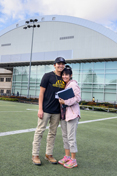About Research
Idaho’s leading, national research university and land-grant institution, the University of Idaho’s mission is to serve the people of our state, our nation and our world. The UI Office of Research and Economic Development is dedicated to encouraging and supporting top-quality research, scholarly activity and creative work that achieves this goal.
University of Idaho researchers contribute to society’s health, knowledge and culture. Our scientists study the foundations of disease, develop stronger crops and investigate ways to adapt to a changing climate. Our social scientists uncover lost histories and examine how humans interact with technology. Our engineers launch ideas into space and improve technologies here on the ground. Our artists compose music performed worldwide and write poems to stir the heart.
And as the world’s vital issues become increasingly complex, we cross disciplinary boundaries to address them in innovative, collaborative ways.
The University of Idaho is also committed to providing research that is reliable and ethical. We strive to fulfill our responsibilities to the citizens of Idaho and the region by meeting federal research guidelines and keeping our processes and policies transparent to the public, all while building strong partnerships with the industries, nonprofits and agencies that fund our research.
Our research provides unbiased and trustworthy resources to the world beyond campus. Our researchers publish and distribute their results so they can reach the people who can use them – whether scientists in other laboratories, resource managers on the ground or policymakers in Congress.
Explore the Office of Research and Economic Development website to learn more about how our exemplary researchers are contributing to the world, how to sponsor research, how we ensure safe and ethical conduct, and how students and faculty can get involved in producing the research and scholarly activities that change Idaho — and the world.






